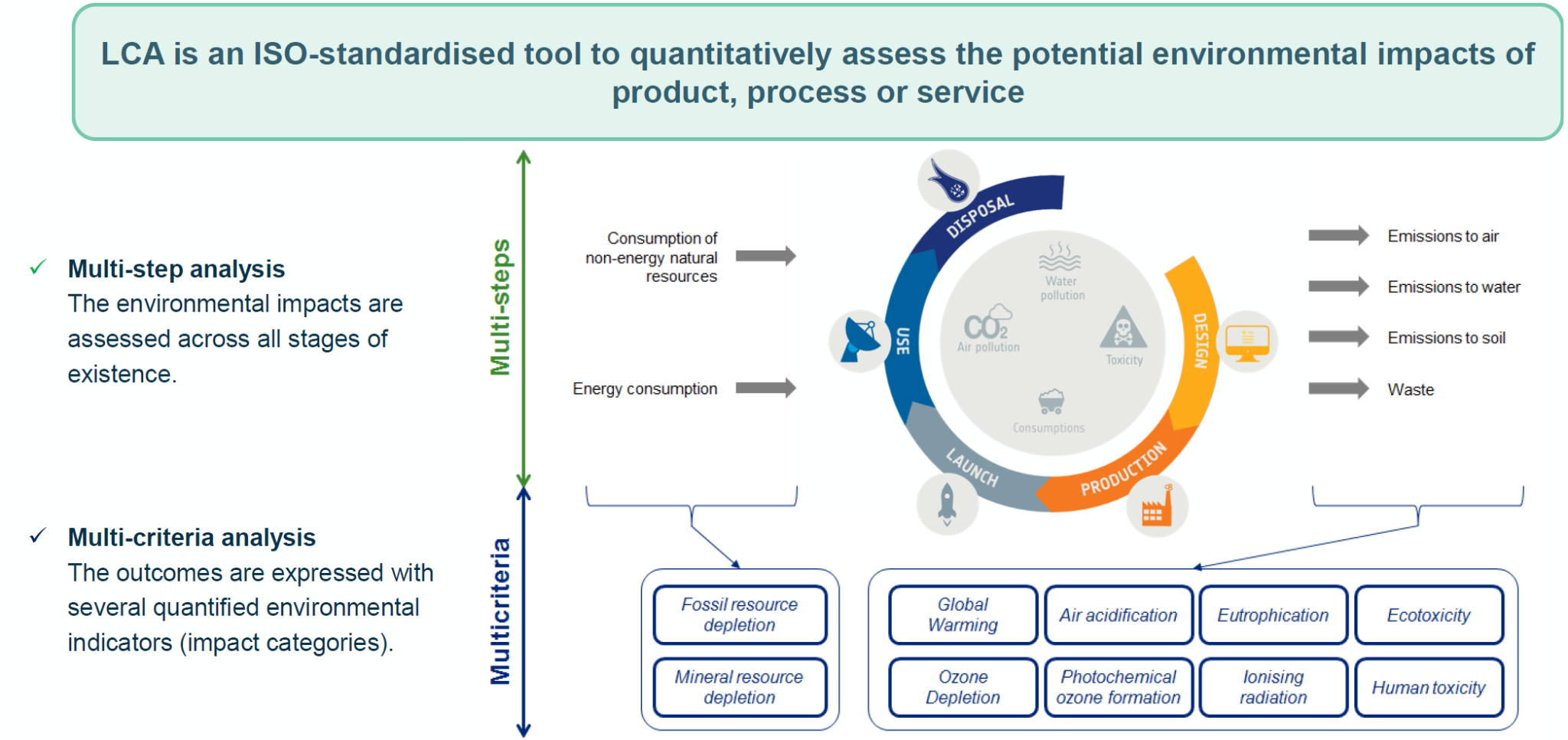
ESA Deloitte training LCA & ecodesign for space systems March 7, 2022
Module 2 Life Cycle Assessment of space systems
The outputs of the ACT software will be used for decision-making in important design trade-offs. Including the environmental impacts in the choice matrix along with performance and cost metrics will allow engineers to select designs that reduce space debris risks and the systems’ footprint on the Earth environment.
By identifying environmental hotspots, engineers will be allowed to target the most promising elements for eco-design, a process to modify a design and reduce its environmental impacts. There are interesting questions regarding the propellant type to use, the reusability strategy to implement, or the on-ground logistics to consider, amongst others.
ACT and TCAT are compatible and may become more interconnected in future projects.
Achievements so far :
Phase one saw the development of a successful proof of concept software and the delivery of the associated documentation, including about:
- Literature review of LCA, launch vehicles’ emissions and impacts
- Definition of the assessment goals, scope, and system boundaries
- Life cycle inventory for simplified test cases, based on ecoinvent and ESA space-specific LCA databases
- Development of the tool’s software structure: modularity is key to improve the models and add new features in the future
- First models and computation with the tool (in progress)
- A user manual
The first phase was extended to:
- Implement integrated assessment models (IAMs), allowing to propagate technology trends to use prospective data in the models
- Improve the user interface and experience
Further improvements will be done in the context of the second project phase, starting in November 2023.
References
- ESA LCA working group, “Space system Life Cycle Assessment (LCA) guidelines” (2016) - available on request at ESA.
- Thibaut Maury et al. “Application of environmental life cycle assessment (LCA) within the space sector: A state of the art”. In: Acta Astronautica (2019).
- A. Dallas et al. “The environmental impact of emissions from space launches: A comprehensive review”. In: Journal of Cleaner Production (2020).
- Deloitte Sustainability, Augustin Chanoine. “Environmental impacts of launchers and space missions”. In: Clean Space industrial Days (2017).
- Paul Erik Schabedoth, “Life cycle assessment of rocket launches and the effects of the propellant choice on their environmental performance”, (2020)
- James A. Vedda Martin Ross. “The policy and science of rocket emissions” (2018).